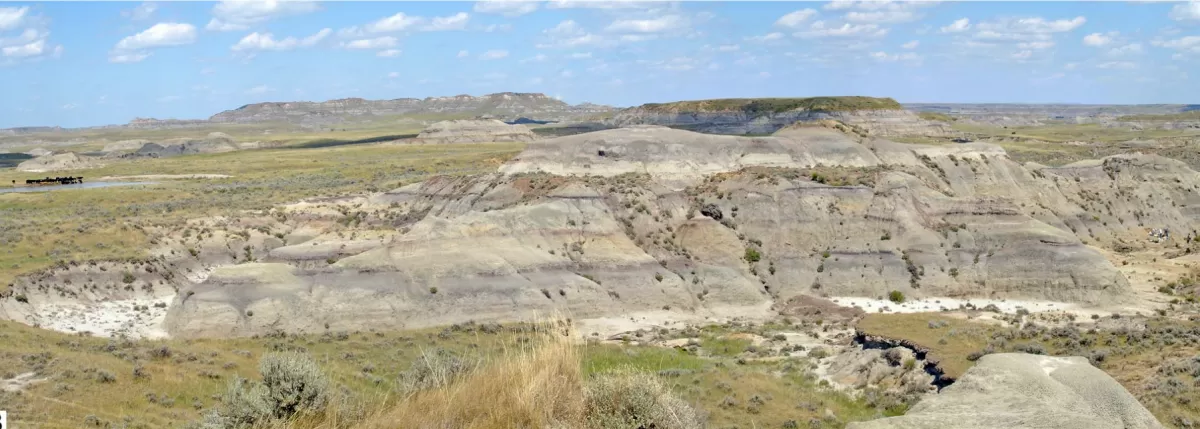
Search
Tiny Fossils, Big Picture
A Deep Time Lineages ActivityActivity Description
Overview
Students will learn how to use microscopic fossil pollen — evidence of past plant life — to reconstruct a plant community that thrived millions of years ago.
- Designed for groups of up to 5 students
- Grades 3-8 or Ages 8-13
- Activity should take 15-20 minutes to complete
Summary
Students work together to help solve a mystery: What did the Hell Creek, North Dakota, landscape (pictured below) look like during the time of the dinosaurs? Students are assigned roles of paleoartists and field scientists. The field scientists describe the fossil pollen they see in a microscope slide. The paleoartists match the description to a key of plants we know from modern pollen. Each time they identify a plant, they place it in the reconstructed landscape for the Cretaceous Period. Once they have completed the picture based on the evidence at hand, they are presented with reconstructions of other time periods for that same location. They observe what has changed, make hypotheses about the causes of those changes, and ask questions.

Download Materials to Use in Your Classroom
You can print and play this activity using a basic color printer and a laminator, or you can choose to produce something a bit more durable and high fidelity with off-the-shelf purchases, a 3D printer, and a custom print shop. Find instructions for each option below.
We recommend no more than 5 students engage in the activity at a time. Multiple copies may be necessary to have an entire classroom divide into groups to do the activity at the same time.
Resource Type
Hands-On Activities
Grade Level
3-5,
6-8
Learning Standards
Next Generation Science Standards
Topics
Earth Science,
Paleontology